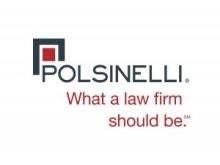Introduction to Texas Senate Bill SB 840
To combat the housing shortage in Texas, the Texas Senate introduced Bill C.S.S.B. 840 (SB 840 or the bill) in April 2025. The purpose of the bill is to streamline the conversion of non-residential buildings and raw land to mixed-use residential or multifamily use. The Texas Senate and House passed the bill on a bipartisan basis, and it was sent to the Governor’s office on May 28, 2025. If SB 840 is executed by the Governor, or if the Governor fails to take any action by June 22, 2025, SB 840 is set to become effective September 1, 2025.
SB 840 requires municipalities in the state of Texas to allow for mixed-use residential and/or multifamily residential use and development on properties zoned for office, commercial, retail, warehouse or mixed-use. No reclassification of use or change in zoning may be required for a municipality to authorize the conversion of an existing building or the development of raw land for mixed-use residential or multifamily purposes. The permit approval process is also significantly streamlined. To convert an existing building from a nonresidential use to mixed-use residential or multifamily, municipalities may not require a traffic analysis, more than one parking space per dwelling unit, design requirements more restrictive than minimum standards, or impact fees. The bill also provides limitations on municipal enforcement of ordinances related to height, density, parking and setbacks for mixed-use residential or multifamily developments. For example, municipalities may not enforce an ordinance pertaining to mixed-use residential or multifamily that is more restrictive than the greater of (i) the highest residential density allowed in such municipality, or (ii) 36 units per acre.
SB 840 only applies to municipalities with a population greater than 150,000 located in a county with a population greater than 300,000. For reference, Plano, Frisco and McKinney all satisfy the population threshold. The bill does provide exceptions for properties located close to heavy industrial areas and similar uses and does not prohibit municipalities from enforcing regulations related to the preservation of historic districts or landmarks.
This article provides a summary of the components of the proposed bill, while also discussing potential risks and effects for the Texas real estate market. For specific questions regarding the bill’s applicability to certain properties and/or developments, legal counsel should be consulted. The bill is also subject to change.
Summary of the Bill
1. Multifamily Uses Must Be Allowed in Non-Residential Zoning Classifications.
Municipalities must allow mixed-use residential use and development or multifamily residential use and development in a zoning classification that allows for office, commercial, retail, warehouse or mixed-use or development. “Multifamily residential use” is defined as “a site for three or more dwelling units within one or more buildings.” “Mixed-use residential” is defined as “a site consisting of residential and nonresidential uses in which the residential uses are at least 65 % of the total square footage of the development.”
2. Population Minimums.
In its current draft, SB 840 only applies to municipalities with a population greater than 150,000 that are located (wholly or partially) in a county with a population greater than 300,000. For reference, Collin County has a population of over one million, with Plano at approximately 290,000, Frisco at 225,000 and McKinney at 213,000.
3. Streamlined Conversion Process for Office, Retail and Warehouse Buildings.
The proposed changes introduce a streamlined process for converting office, retail and warehouse buildings into residential spaces. A building proposed to be converted to multifamily use must: (i) be used for office, retail or warehouse, (ii) be converted to residential for at least 65% of the building and at least 65% of each floor of the building, and (iii) be constructed at least five years before the proposed date of conversion. However, there are certain requirements that have been waived. In connection with a conversion to mixed-use and/or multifamily use, a municipality may not require: (i) a traffic impact analysis; (ii) construction of improvements or payment of a fee in connection with mitigating traffic effects; (iii) more than one parking space per unit; (iv) the extension, upgrade, replacement or oversizing of a utility facility except as necessary to provide the minimum capacity needed; (v) a design requirement, including a requirement related to the exterior, windows, internal environment of a building or interior space dimensions of an apartment, that is more restrictive than the applicable minimum standard under the International Building Code as adopted as a municipal commercial building code under Section 214.216; or (vi) an impact fee.
4. Streamlined Permit Approval Process.
The bill introduces mandatory permit approvals. If the proposed development and/or change in use meets the land development regulations in SB 840, then the municipal authority responsible for approving building permits must approve the permit and may not require further action for the approval to take effect.
Additionally, the legislation limits the enforcement of building ordinances on mixed-use residential or multifamily developments. A municipality may not adopt or enforce ordinances more restrictive than the following upon mixed-use residential or multifamily residential developments:
- Density. Municipality must allow greater of (i) highest residential density allowed, or (ii) 36 units per acre.
- Height. Municipality must allow the greater of (i) highest height that would apply to an office, commercial, retail or warehouse development constructed on the site, or (ii) 45 feet.
- Setback. Municipality must allow the lesser of (i) a setback that would apply to an office, commercial, retail or warehouse development constructed on the site, or (ii) 25 feet.
- Parking. Municipality cannot require (i) more than one parking space per dwelling, or (ii) a multi-level parking structure.
- Floor Area/Lot Ratios. Municipality may not enforce an ordinance that restricts the ratio of the total building floor area of a mixed-use residential or multifamily residential development in relation to the lot area of the development.
5. Exceptions to Applicability of SB 840.
The “Heavy Industrial Exception” provides that regardless of population metrics, SB 840 does not apply to (i) zoning classifications that allow heavy industrial uses, (ii) land in close proximity to heavy industrial use, airports or military bases, or (iii) land designated by a municipality as a “clear zone” or “accident potential zone.”
Additionally, SB 840 does not impact municipal ability to enforce:
- Short-term rental regulations;
- Water quality protection regulations/requirements;
- The following regulations, which are generally applicable to other developments in the municipality:
- unless otherwise stated: (i) sewer and water access requirements and (ii) building codes;
- stormwater mitigation requirements; or
- regulations related to historic preservation, including protecting historic landmarks or property in the boundaries of a local historic district.
6. Enforcement of SB 840.
SB 840 authorizes a housing organization or other person adversely affected or aggrieved by a violation of the bill's provisions to bring an action for declaratory or injunctive relief against a municipality. The court will award court costs and reasonable attorney's fees to a claimant who prevails in such an action.
Potential Impacts & Associated Risks of SB 840
- Likelihood of Passage. There is strong bipartisan support behind SB 840, but various municipalities throughout the state are lobbying against the bill. There may be additional provisions added that provide for exceptions to applicability, or it could be vetoed.
- Commercial/Office Risks. The potential upside for commercial/office aside, certain commercial and/or office sites could be negatively impacted by adjected law-quality/high-density multifamily construction.
- Multifamily Values. Passage of SB 840 has the potential to devalue existing multifamily properties and/or saturate the multifamily housing market in some municipalities. As multifamily supply increases, developers relying on exclusive and/or isolated multifamily zoning classifications will experience less demand.
- Municipal Workarounds. SB 840 provides for exceptions related to the preservation of historic districts for municipalities. If SB 840 passes, there may be a concerted effort by municipalities to categorically and/or geographically broaden historic designations. Municipalities could also conceivably seek to broaden/apply other exceptions – water quality enforcement, heavy industrial, etc.
- Infrastructure Risks. Critics of SB 840 have asserted that reclassifications from commercial to multifamily could strain existing utility and roadway infrastructure. They maintain that the bill’s waiver of traffic studies and additional parking mandates presents safety and health risks. The bill’s author (Senator Bryan Hughes) maintains that the population thresholds in the bill, along with the other exceptions to applicability, mitigate these risks.
- Single Family Neighborhood Risks. Single family neighborhoods tend to value and/or plan around commercial and/or retail areas. Reclassifying commercial sites to multifamily has the potential to devalue single family homes, which were planned or developed in close proximity to commercial developments.
- Administrative/Legal Risk. SB 840 does not directly address Public Improvement Districts or District Overlays, but the present bill would override any conflicting ordinances (subject to the exceptions in the bill). Further localized research would be necessary to assess the interplay between SB 840 and existing overlays for a specific property or district. For example, if a property is reclassified as residential but is located within a traditionally commercial district overlay, there may be a question as to what residential quality standards would apply. Municipalities may need to adopt additional quality controls to ensure that the residential development conforms to the surrounding character if a reclassification occurs.
The proposal of SB 840 represents a legislative effort to combat the Texas housing shortage by facilitating a streamlined conversion of non-residential buildings into mixed-use or multifamily properties. The bill, which has bipartisan support from the Texas legislature, is awaiting action from the Governor. While the bill has obvious upsides for multifamily development, its passage could significantly destabilize the real estate market in Texas by taking away local municipal control.





 />i
/>i
